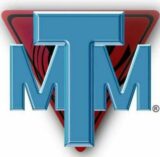
Osteoporosis is a common bone disorder that affects millions of people worldwide. This condition weakens bones, making them fragile and prone to fractures. Understanding the basics of osteoporosis is essential for prevention, early detection, and proper management. In this article, we will delve into the causes, risk factors, symptoms, diagnosis, and treatment options for osteoporosis. By gaining a comprehensive understanding of this condition, individuals can take proactive steps to maintain healthy bones and reduce the risk of fractures as they age.
Causes of Osteoporosis
Osteoporosis occurs when the body fails to form new bone, when too much old bone is reabsorbed, or a combination of both. The balance between bone formation and resorption is disrupted, resulting in weakened bones. Several factors contribute to the development of osteoporosis, including:
1. Aging: As individuals age, the rate of bone formation decreases, and bone loss accelerates, leading to decreased bone density.
2. Hormonal Changes: Postmenopausal women are particularly susceptible to osteoporosis due to the decrease in estrogen levels, which plays a crucial role in maintaining bone density.
3. Lack of Calcium and Vitamin D: Inadequate intake of calcium and vitamin D can impair bone health and increase the risk of osteoporosis.
Risk Factors for Osteoporosis
While aging and hormonal changes are primary risk factors, several other elements can contribute to the development of osteoporosis. These include:
1. Gender: Women are more prone to osteoporosis than men due to the rapid decline in estrogen levels during menopause.
2. Family History: Having a family history of osteoporosis or fractures increases the likelihood of developing the condition.
3. Lifestyle Choices: Sedentary lifestyle, excessive alcohol consumption, smoking, and a diet poor in calcium and vitamin D can all contribute to bone loss.
Symptoms and Diagnosis of Osteoporosis
Osteoporosis is often referred to as a “silent disease” because it progresses without symptoms until a fracture occurs. However, some individuals may experience back pain, loss of height, or a stooped posture. To diagnose osteoporosis, healthcare professionals utilize various tests, including:
1. Dual-energy X-ray absorptiometry (DXA): This scan measures bone mineral density and is the most commonly used test for diagnosing osteoporosis.
2. Laboratory Tests: Blood and urine tests can help evaluate bone health and rule out other conditions that may cause bone loss.
Treatment and Prevention of Osteoporosis
The management of osteoporosis aims to prevent fractures, relieve pain, and slow down bone loss. Treatment options include:
1. Lifestyle Modifications: Regular exercise, especially weight-bearing and resistance exercises, helps strengthen bones and improve overall balance and posture.
2. Nutritional Supplements: Adequate intake of calcium and vitamin D is essential for maintaining bone health. Supplements may be prescribed if dietary intake is insufficient.
3. Medications: Several medications, such as bisphosphonates, hormone replacement therapy (HRT), and selective estrogen receptor modulators (SERMs), can be prescribed to slow down bone loss and reduce the risk of fractures.
4. Fall Prevention: Preventing falls is crucial in individuals with osteoporosis. Measures such as removing hazards at home, ensuring proper lighting, and wearing appropriate footwear can help prevent falls and subsequent fractures.
Osteoporosis is a significant health concern, particularly for older adults, and understanding its basics is crucial for early detection and effective management. By recognizing the causes, risk factors, symptoms, and treatment options for osteoporosis, individuals can make informed decisions about their bone health. Incorporating lifestyle modifications, ensuring proper nutrition, and seeking medical intervention when necessary can significantly reduce the risk of fractures and improve overall quality of life. By spreading awareness and taking proactive steps, we can work towards a future with stronger, healthier bones for everyone.
